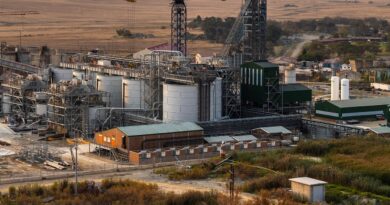Organic growth powers robust production profile for Barrick
NEW YORK – Barrick’s industry-leading portfolio of gold and copper assets is projected to show strong growth over the next five and 10 years, president and chief executive Mark Bristow told an investor meeting here today.
The unlocking of value at the Pueblo Viejo gold mine in the Dominican Republic, following the finalization of the location for the new tailings storage facility, will support that growth, he said, with the latest geological model for its current $2.1 billion expansion project1 now showing the potential for upgrading 2 million ounces of inferred resources to indicated which, together with approximately 10 million ounces of measured and indicated resources, are expected to convert to proven and probable reserves2.
“Others buy, Barrick builds. This investment is expected to extend the Tier One3 mine’s life to beyond 2040, at an average annual production rate of more than 800,000 ounces1,” Bristow said.
“There’s also more to come from our three Tier One assets in Nevada, where we hold 8,000 square kilometers of prospective land in one of the world’s most richly-endowed gold districts. In Africa, our two Tier One mines continue to deliver geologically driven growth, while the two Tanzanian mines we took over have been transformed into successful operations and have the potential to achieve Tier One status as a combined complex. Meanwhile, we’re well on our way to building a Tier One copper business as a result of the Reko Diq project in Pakistan and the Lumwana super pit in Zambia.”
Bristow said Barrick’s performance since its merger with Randgold three years ago had been driven by a clear and disciplined long-term strategy, focused on leveraging its Tier One assets, and finding more. Gold and copper production has met or exceeded guidance each year since the merger. Strong cash flow generation has turned net debt of $4.2 billion into net cash of $145 million at the end of last quarter4. The strong balance sheet has enabled the company to deliver peer-leading returns to shareholders within the framework of a performance-linked dividend policy. Brownfields exploration continues to replace reserves depleted by mining, and the search for new discoveries has been extended across Barrick’s expanding global footprint. The company already operates in 18 countries across four continents.
“Barrick was a leader in sustainability long before ESG became a key investment criterion. This means that we haven’t had to scramble to comply with new requirements and expectations — the ability to satisfy them was already embedded in every aspect of our business. We have, however, refined our approach to sustainability so that it holistically embraces the linked challenges of poverty, climate change and biodiversity. It includes a detailed, demonstrable roadmap based on climate science, to the achievement of a 30% reduction in greenhouse gas emissions by 20305, against a 2018 baseline, with the ultimate goal of net zero emissions by 2050,” Bristow said.




